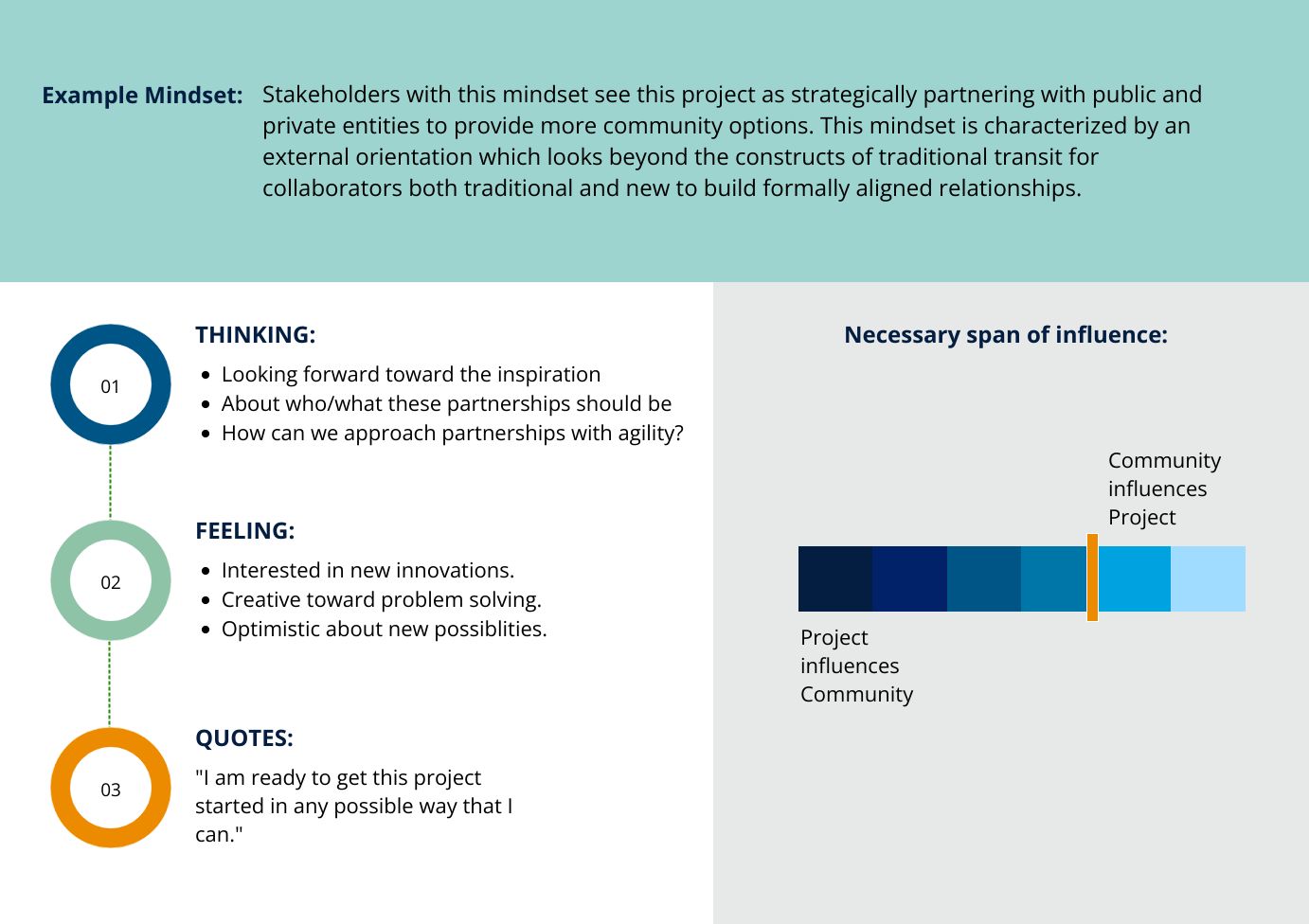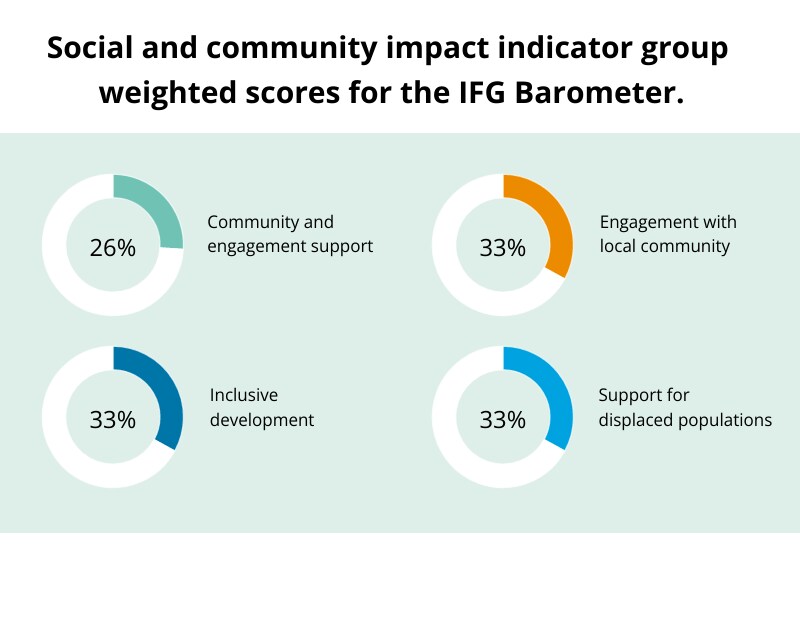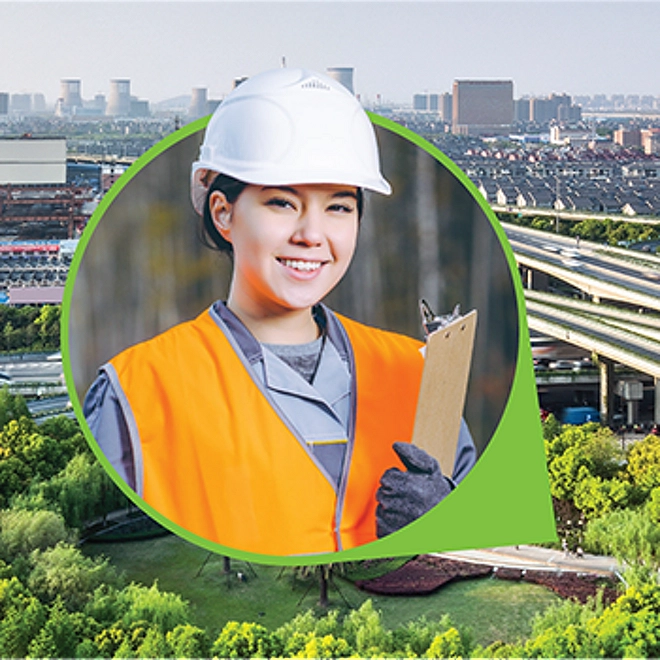Community engagement ‘for good’
Improving the social impact of infrastructure investments through meaningful community engagement
Around the world, there is a growing recognition that meaningful community engagement is necessary for improving the social and community impact of infrastructure investments, helping to ensure the benefits are widely shared, and fostering greater democratic participation in the process.
In June 2023, Economist Impact—in collaboration with the Duke Nicholas Institute for Energy, Environment, and Sustainability and Deloitte—launched Infrastructure for Good (IFG). Through this comparative analysis of infrastructure ecosystems across 30 countries, they found that deficiencies in infrastructure planning contribute to sub-optimal social impact (see nearby inset). Less than a quarter of countries carry out strategic social assessments or mandate new projects to evaluate their social impact. Additionally, in more than 60% of countries, interactions with local communities are conducted ad-hoc.
Moreover, while increasing community engagement may further lengthen an already demanding public input process, it may de-risk projects by preventing public opinion from shutting down the process in the design phase. Meaningful public consultation should take place at an early enough stage for changes to be incorporated. If consultation intends to inform the community of what is taking place, it merely pays lip service to the process and raises the likelihood of substantial objection and public outcry.
Incorporating changes earlier in the process is often cheaper than waiting until later, which is why it’s so important to engage the community as early as possible to initiate active planning participation. This can be as simple as:
- Identifying key affected stakeholders early and requesting feedback face-to-face or in other forums.
- Surveying and observing reactions (e.g., feelings, interpretations, and fears) to infrastructure plans and potential impacts.
- Interpreting data to build and inform opportunities for collaboration and change to tie back into social and community impacts.
- Analyzing data and creating collaboration plans that involve stakeholders to build better infrastructure plans that meet social and community needs.
Change is never easy, but engaging stakeholders and crafting compelling “Why change?” conversations helps with planning for any change-related initiative. When planning for a shift in technology, processes, or elsewhere, we recommend tapping into two-way communications early and often to:
- Establish mutual understanding,
- Gather perspectives, and
- Determine the priorities of affected stakeholders.
This model allows senders and receivers to have equal opportunity to share change proposals and corresponding feedback. Feedback is collected and informs further communication strategies to improve both parties’ experience. Creating inclusive messaging, providing opportunities for feedback, and incorporating feedback into change plans can support productivity and increase collaboration between parties.
This simple yet powerful model becomes even more important as decisions that affect constituents are made. Government agencies can utilize two-way communications to maximize infrastructure investments' social and community impact. In the US, this is particularly timely given the funding investments from the American Rescue Plan Act (ARPA), the Infrastructure Investment and Jobs Act (IIJA), and the CHIPS and Science Act, among others, which provide funding opportunities at the federal, state, and local levels to meet stakeholder needs by involving their communities, early and often, in crafting major project plans.
Creating intentional opportunities to share proposals, hear and accept feedback from stakeholders, and reposition helps ensure fluid communications and fosters transparency. Below are sample actions taken to establish opportunities for two-way communications.
Identify opportunities for face-to-face conversations
Face-to-face conversations provide the opportunity to set the stage, gather and collect feedback on the spot, and follow up with surveys/assessments for the group. This is an excellent time to build rapport, encourage opinion-sharing, and identify subject-matter specialists and potential change champions.
Develop surveys across key touchpoints
Utilize surveys to measure the end-to-end experience of stakeholders at various stages of project planning, development, and delivery. Data collected from stakeholder surveys often provides a foundation to deliver tangible impact – improving engagement, building trust, and reducing complaints – when planning meaningful change initiatives.
Opens in new window
Through these feedback opportunities, government agencies measure the stakeholder experience to:
- Identify stakeholder objectives, pain points, and challenges related to the change initiative;
- Listen to understand critical interactions, relationships, and journeys;
- Interpret the stakeholder experience through mindsets; and
- Act on the feedback collected to validate the stakeholder journey and inform project plans.
Feedback collected from stakeholders translates into enhanced insights to improve future-state plans. These insights are interpreted to generate representative mindsets of stakeholder groups; mindsets outline what the stakeholders are saying, thinking, and feeling and help convey their sphere of influence. Categorizing affected stakeholder groups by mindsets helps projects stay organized and provides the context needed to build tailored communications for each group.
Understanding the mindsets and opportunities in an organization
The different mindsets that are present among stakeholders enables planners to empapthize with their sentiments, challenges, and varying outlooks. Stakeholders can be engaged through targeted actions and concepts to encourage future change.

Figure 2: Description of how mindsets help us to better understand stakeholder groups.
Creating opportunities for dynamic back-and-forth communications can build trust with communities. As trust is established early and often, long-term relationships to assist in project planning and delivery are fostered.
When planning infrastructure improvements, governments should consult the IFG Barometer and publicly available data tools to measure the impact of community engagement.

Government agencies can strengthen their social and community impact scores, a critical pillar to assessing infrastructure planning impact, by expanding two-way communication efforts with local communities and encouraging stakeholders to build upon, question, evaluate, and create fresh solutions that meet more significant community needs. Doing so will likely spur inclusiveness and greater collaboration and help realize the full potential of infrastructure improvements.
The authors would like to thank Lydia McManus for her help in creating this article.




